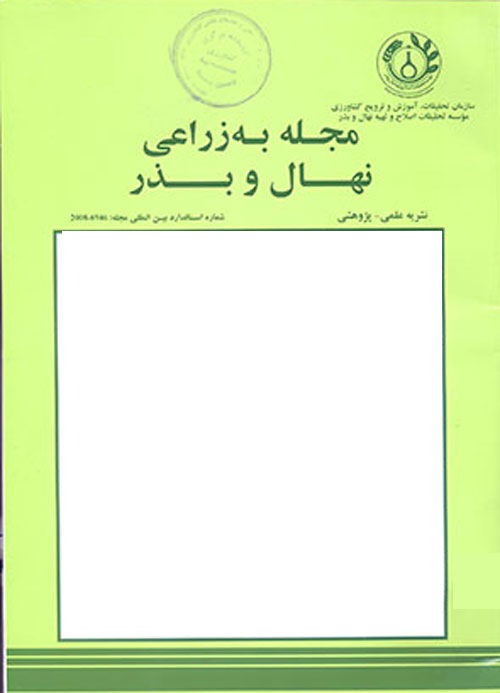Determination of Sowing Time, Grain Yield Potential, Yield Gap, and Risk Analysis of Wheat Production in Rainfed Regions of Khuzestan Province in Iran
Author(s):
Article Type:
Research/Original Article (دارای رتبه معتبر)
Abstract:
Khuzestan province has large areas of rainfed wheat where the average grain yield, due to annual variability in weather conditions and poor management, is less then one ton per hectare. To zoning rainfed wheat areas in Khuzestan based on planting time, yield potential and yield gap as well as production risk the AquaCrop and CERES-Wheat models were used. Long-term daily weather data of each region, after processing, and the dominant soil texture were arranged as models inputs to simulate planting time and yield potential for each region. Risk analysis was performed for models outputs using RAINBOW software. All results moved to Geographical Information System (GIS) for zoning. The results showed that the commencement of sowing time in central (Shushtar) and northeast (Izeh) regions starts 15 days earlier than north (Dezful) and southeast (Behbehan) regions. The longest cropping season with 164 days (2190 GDD) and shortest with 124 days (1860 GDD) belonged to northeast (Izeh) and central (Shushtar) regions, respectively. The results also showed that the average grain yield potential varied from 4.2 (Izeh) to 1.7 (Shushtar) tons per hectare. Average grain yield potential of south to north, northeast and southeast had an increasing trend and it was proportional to the amount of rainfall. The results of risk analysis revealed that production risk varied in different zones, and zones with higher yield potential have lower production risk. The results indicated that yield gap varied from 88% (Izeh and Behbahan) to 66% (Shushtar and Dezful). Areas with higher yield potential had more yield gaps. Overall, suitable sowing time window of wheat in rainfed areas of Khuzestan (from 11 November to 16 December) is the same as sowing time window for irrigated wheat. To quantify the contribution of each factor affecting the yield gap and recommendation of appropriate crop management practices to reduce the gap, further researches are required for evaluating the model for simulating the effects of water, fertilizers and weeds.
Keywords:
Wheat , zoning , Rainfed , sowing time , crop management
Language:
Persian
Published:
Seed and Plant Production Journal, Volume:35 Issue: 2, 2019
Pages:
159 to 181
magiran.com/p2088024
دانلود و مطالعه متن این مقاله با یکی از روشهای زیر امکان پذیر است:
اشتراک شخصی
با عضویت و پرداخت آنلاین حق اشتراک یکساله به مبلغ 1,390,000ريال میتوانید 70 عنوان مطلب دانلود کنید!
اشتراک سازمانی
به کتابخانه دانشگاه یا محل کار خود پیشنهاد کنید تا اشتراک سازمانی این پایگاه را برای دسترسی نامحدود همه کاربران به متن مطالب تهیه نمایند!
توجه!
- حق عضویت دریافتی صرف حمایت از نشریات عضو و نگهداری، تکمیل و توسعه مگیران میشود.
- پرداخت حق اشتراک و دانلود مقالات اجازه بازنشر آن در سایر رسانههای چاپی و دیجیتال را به کاربر نمیدهد.
In order to view content subscription is required
Personal subscription
Subscribe magiran.com for 70 € euros via PayPal and download 70 articles during a year.
Organization subscription
Please contact us to subscribe your university or library for unlimited access!


